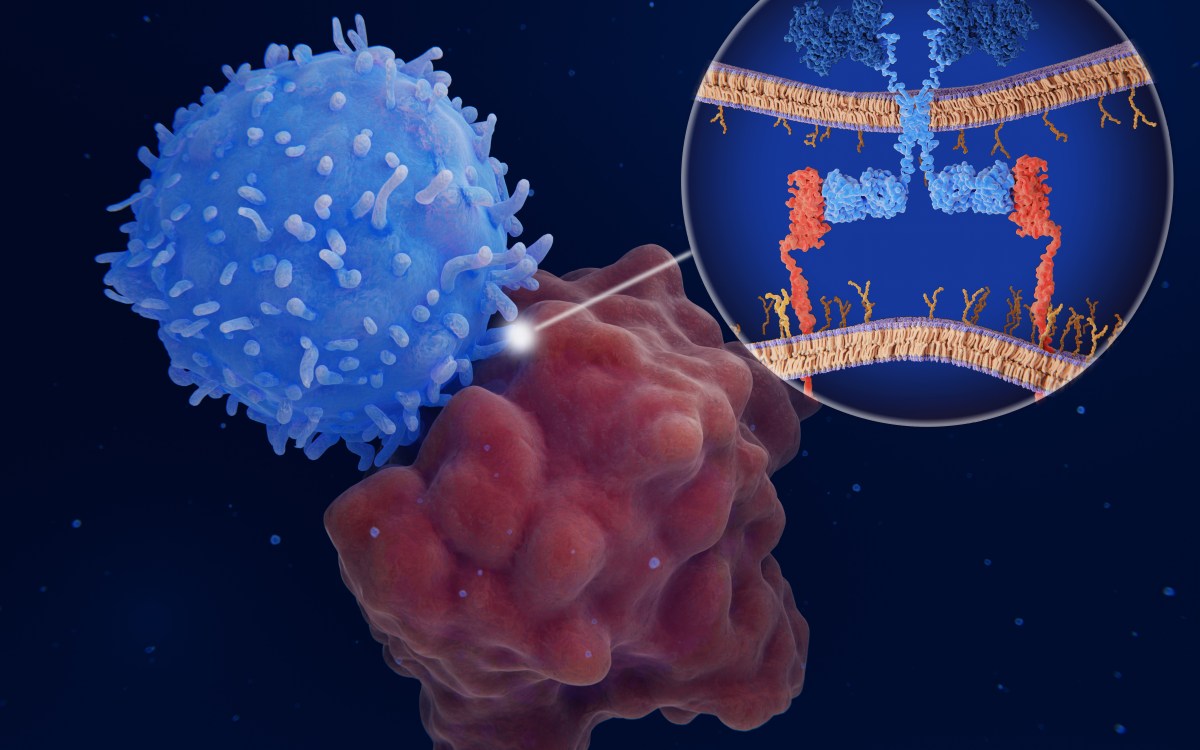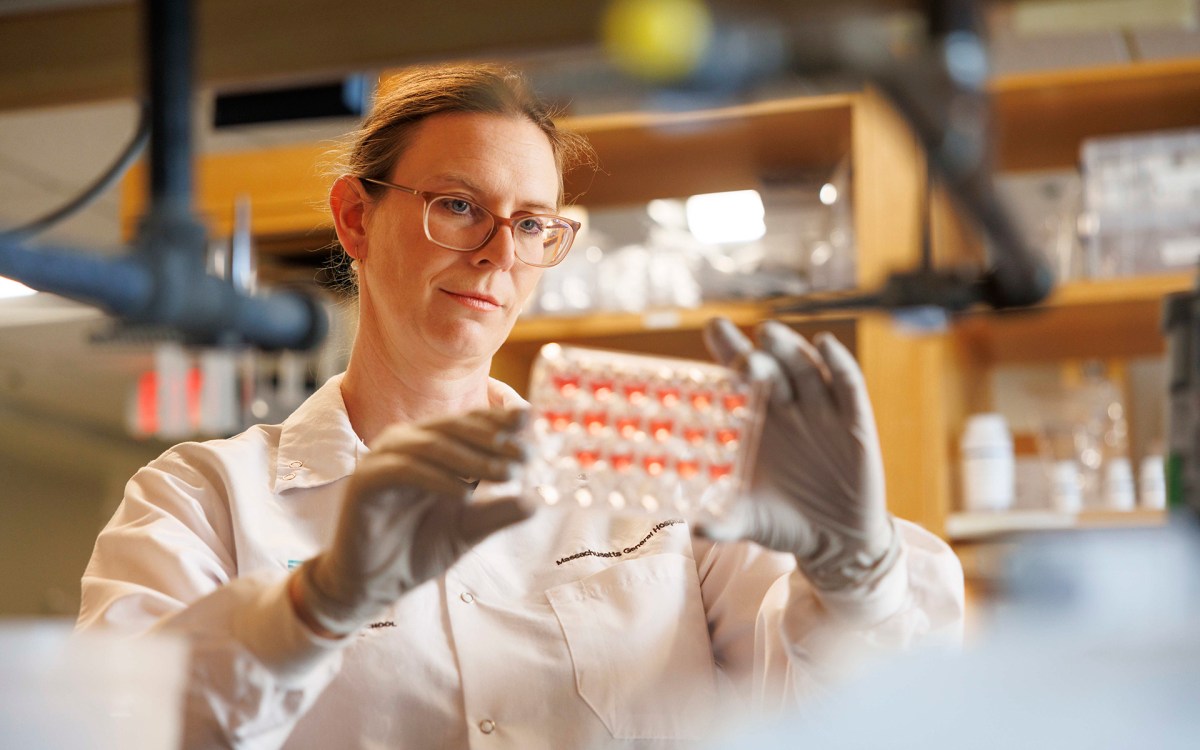Molecule implicated in transcription termination
Ribonuclease may derail polymerase engine, ending assembly of mRNA
When a protein is made its DNA code must first be rewritten as messenger RNA (mRNA). This process of transcription requires a large enzyme complex, RNA polymerase, to begin at the start of a gene, work its way along copying the DNA into mRNA, and then stop when it gets to the end. Therein lies a problem. Though there are certain DNA sequences that denote the beginning of a gene, there are no signals to mark the end. Why doesn’t the RNA polymerase just keep going? For decades scientists have puzzled over this question. Now, in the Nov. 25, 2005 Nature, Harvard Medical School professor of biological chemistry and molecular pharmacology Stephen Buratowski provides an answer. The key lies in a certain ribonuclease enzyme. Called Rat1, the enzyme can start at the head of a growing RNA and chew up the whole chain. Normally, the growing mRNA is spared this fate because its head is protected by a chemical cap. But as RNA polymerase nears the end of a gene, it incorporates a special sequence called a polyadenine (polyA) signal. Once this happens, the growing RNA gets cut, exposing a new uncapped head.





